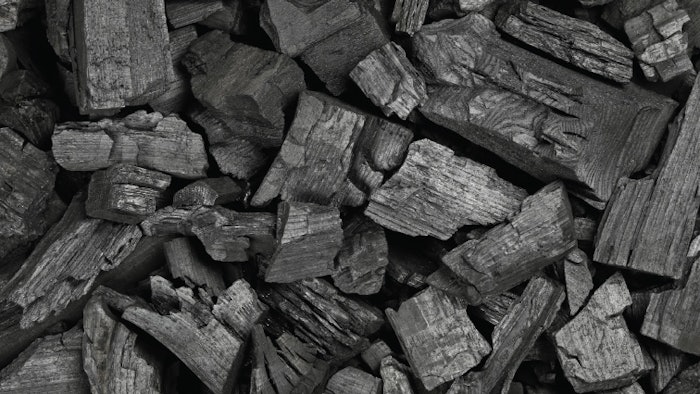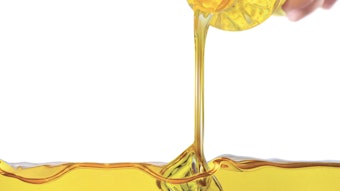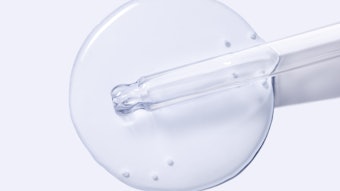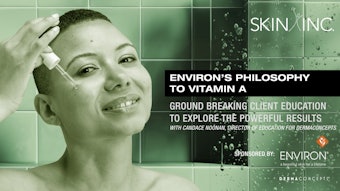
Charcoal, per Brittanica, is an impure form of crystalline carbon. It is obtained as a residue when carbon material is partially burned or heated with limited access to air1 – and since carbon is the primary component of all known life on earth, burning any animal or vegetable matter with a limited supply of air creates charcoal.2
Charcoal burns hotter, slower and cleaner than wood – i.e., it is less smoky.3 This was likely noticed soon after man learned to control fire over one million years ago.2 Around 30,000 B.C., cavemen used charcoal to draw on the walls of caves.2 People have been making charcoal since around 4,000 B.C., usually by piling up wood and covering it with dampened dirt, then lighting the wood on fire so it burned slowly and without much oxygen.3
It was around this same time when it was discovered that naturally occurring ores of copper, zinc and tin oxides, when heated with charcoal, were transformed to pure metal; enter: The Bronze Age, followed by the Iron Age.2 Blacksmiths used charcoal to smelt bronze and iron because it takes a hot fire to melt most metals or glass.3
In fact, heating charcoal to a very high temperature is how another well-known and related material is created: activated charcoal. According to one soap company, the first use of activated charcoal dates to around 3,750 B.C., when it was used by Egyptians for smelting ores to create bronze.4
Egyptian artists also used charcoal to make black paint for wall paintings. Writers mixed powdered charcoal with water to make ink.3 In the 9th century, a Chinese alchemist found that blending charcoal with other elements created a combustible mixture – gunpowder.2
Related: Why You Should Wax With Charcoal
Properties and Health Benefits
Around 1,500 B.C., the use of charcoal to eliminate malodors from wounds was recorded by the Egyptians. This was the first mention of charcoal in a medical application.2 The Egyptians also administered it for intestinal ailments.4 By 400 B.C., on trading ships, the Phoenicians stored water in charred barrels to improve its taste. They had apparently discovered the ability of charcoal to bind substances to its surface – a property known as adsorption.2
Activated carbon materials (e.g., activated charcoal) are said to be among the best adsorbents thanks to their large specific surface area.5 This property is created when ordinary charcoal is heated to a high temperature, which unbinds elements and compounds from the carbon atoms, in turn freeing up all the binding sites to receive incoming molecules and atoms. This makes activated charcoal much more porous than ordinary charcoal. Reportedly, one teaspoon of activated charcoal contains the approximate surface area of a football field.6
Since activated charcoal is good at removing contaminants, it is often made readily available in hospital emergency rooms for cases of drug overdoses or poisoning – whereby it is administered orally to bind toxins before they are absorbed into the bloodstream.2 The activated charcoal itself is not absorbed, so it reaches the gut in an unchanged form,7 where its negative charge attracts positively charged molecules such as toxins and gases that are eventually eliminated by the body.7
Activated charcoal has been recommended as a treatment for other medical issues, including intestinal gas, kidney problems, skin diseases and even teeth whitening.6 Its adsorptive properties have been used to remove malodors or colored substances – being applied, for example, in water filters, gas masks, air purification systems and even underwear; or to recover solvents and other volatile materials.1, 2 The well-known adsorption benefits of activated charcoal have also (not surprisingly) been leveraged by inventive marketers who have positioned foods and beverages containing the material as detoxifying.2
Continue reading about the skin benefits of charcoal in the September Digital Magazine...
Rachel Grabenhofer, ELS, is the managing scientific editor of Cosmetics & Toiletries, Skin Inc.’s sister brand for cosmetic chemists. She’s a member of the Skin Microbiome Council and Society of Cosmetic Chemists, and for several years, led judging panels to honor the best ingredients in cosmetics.











